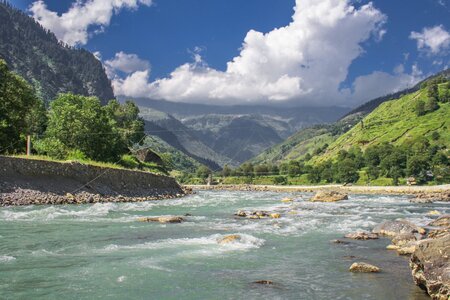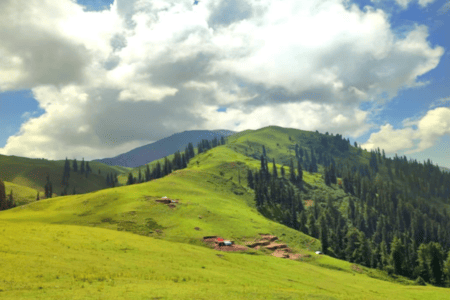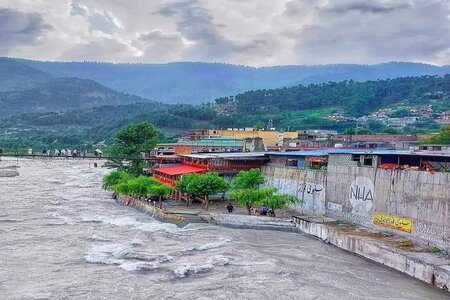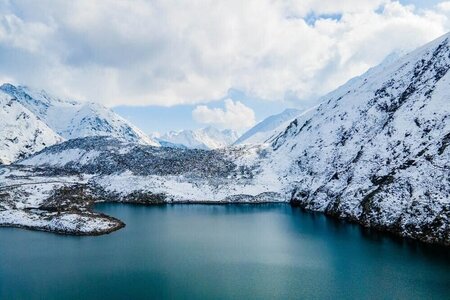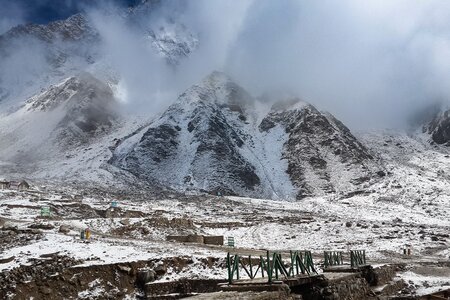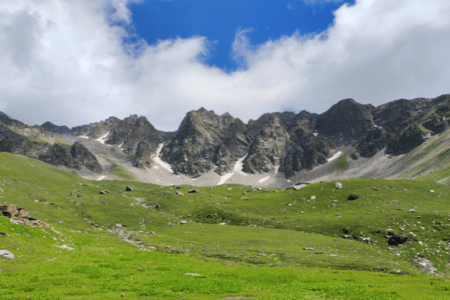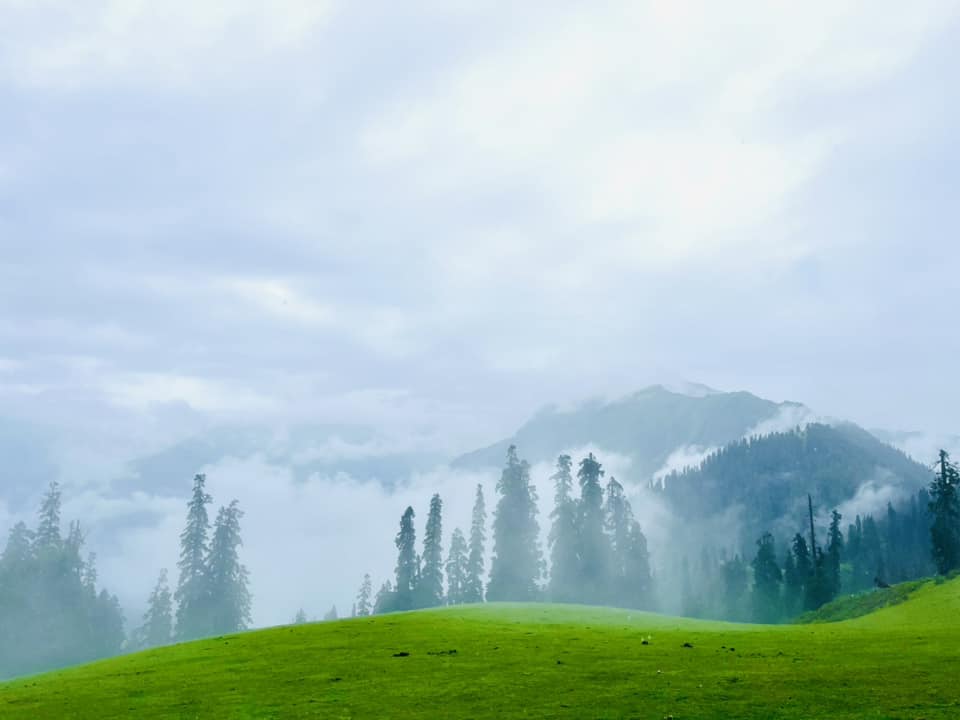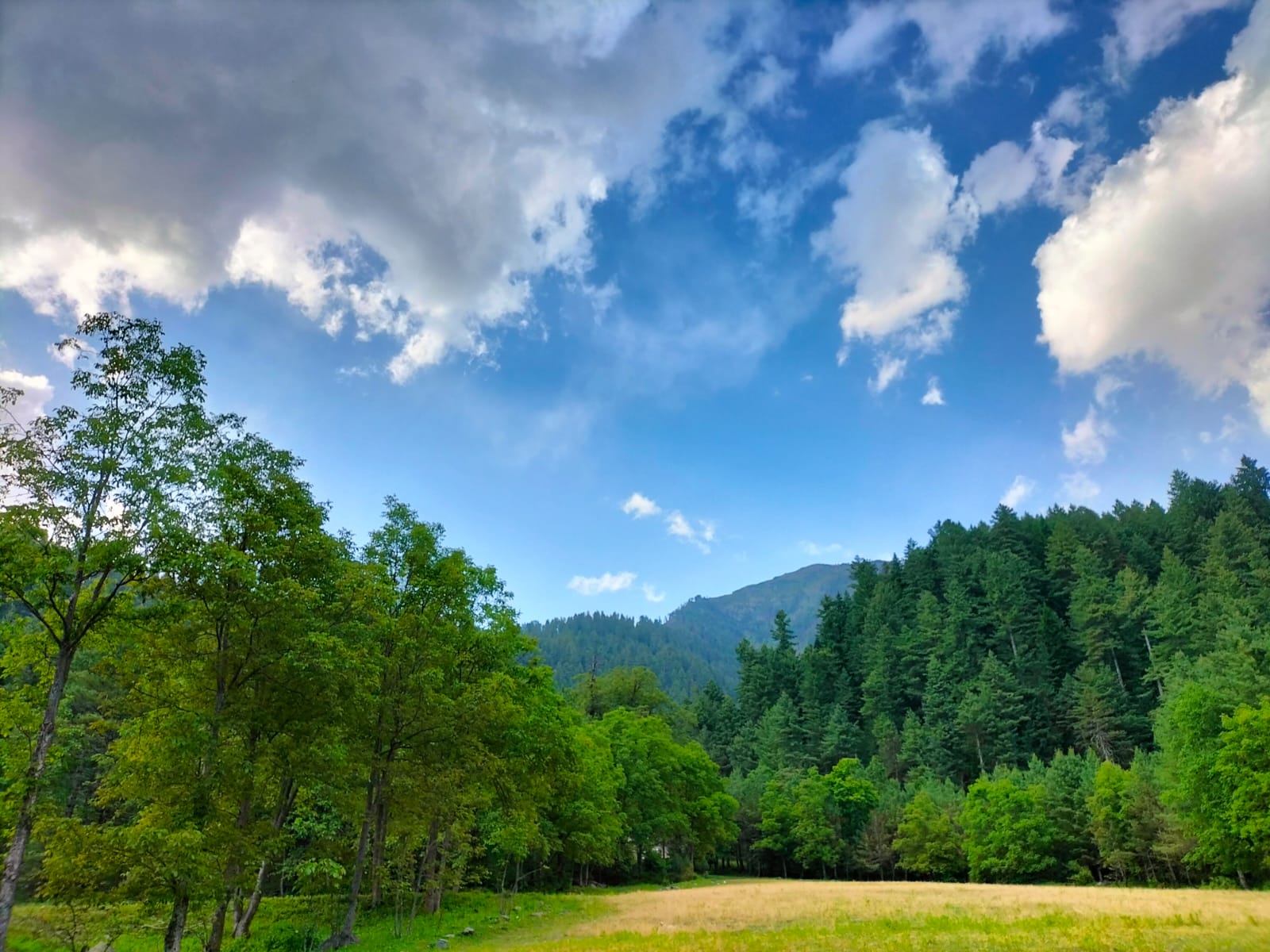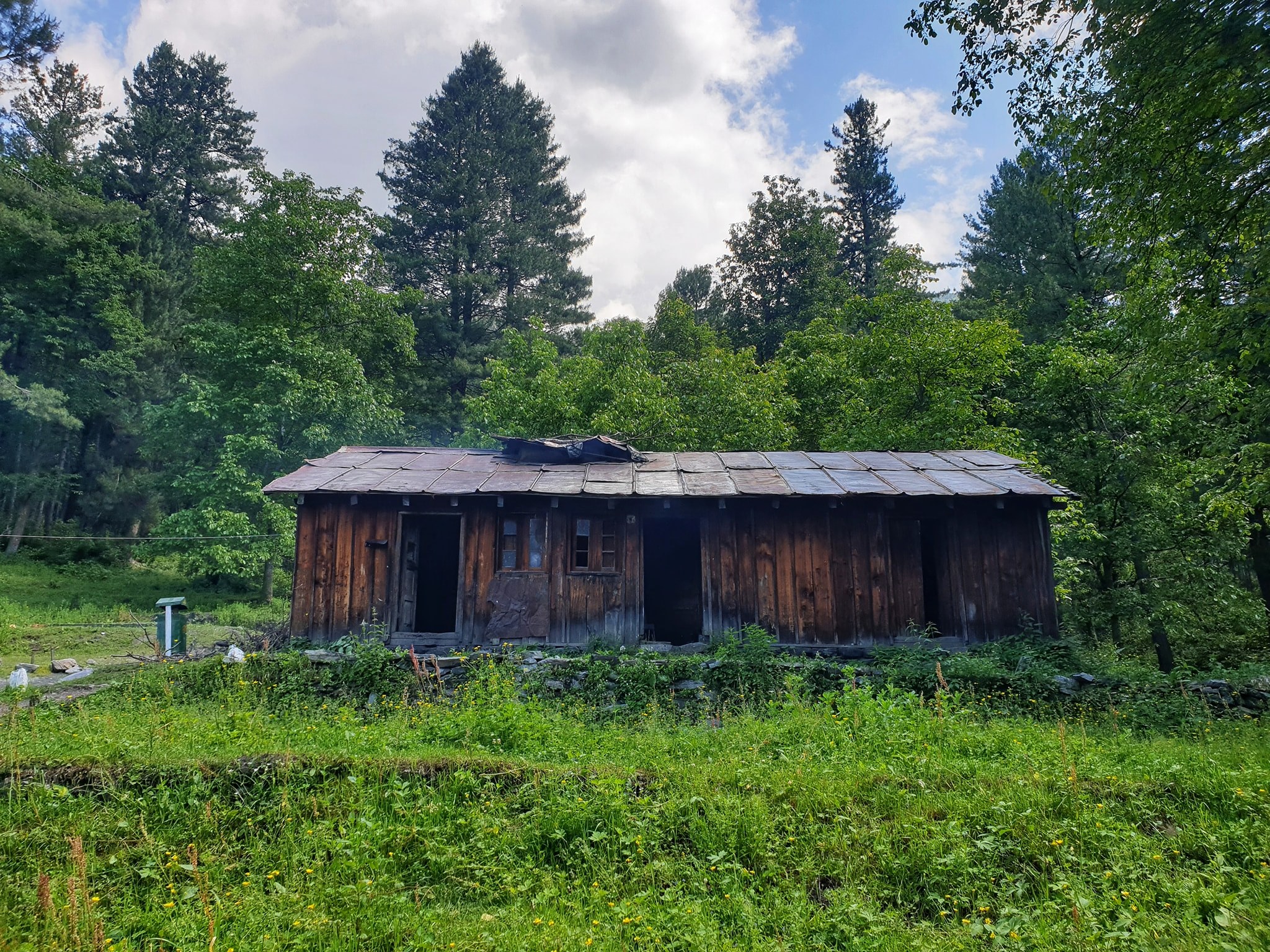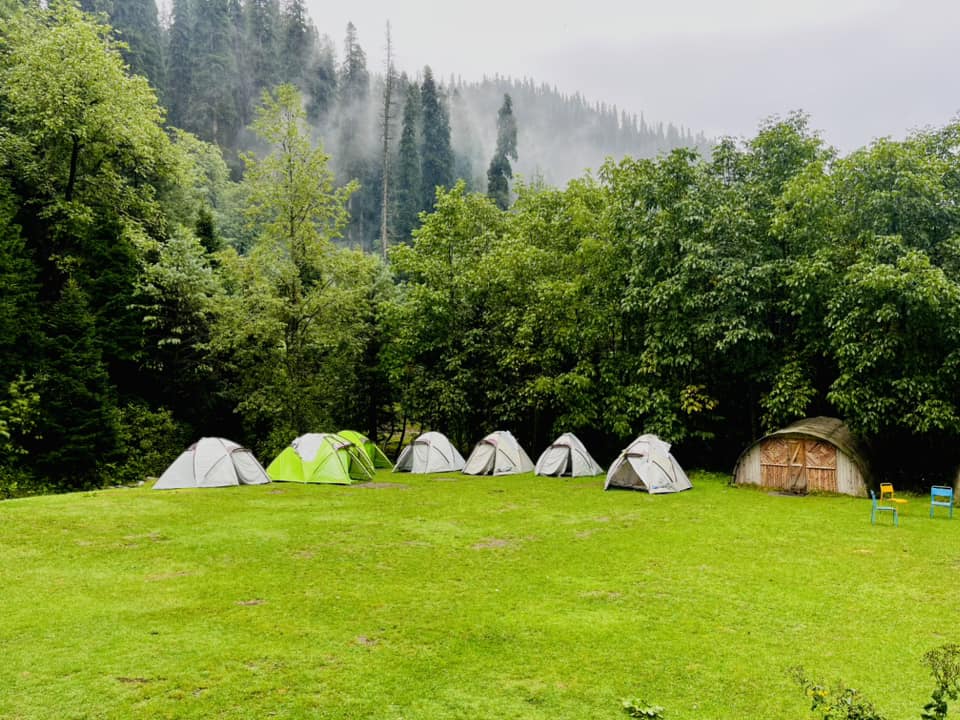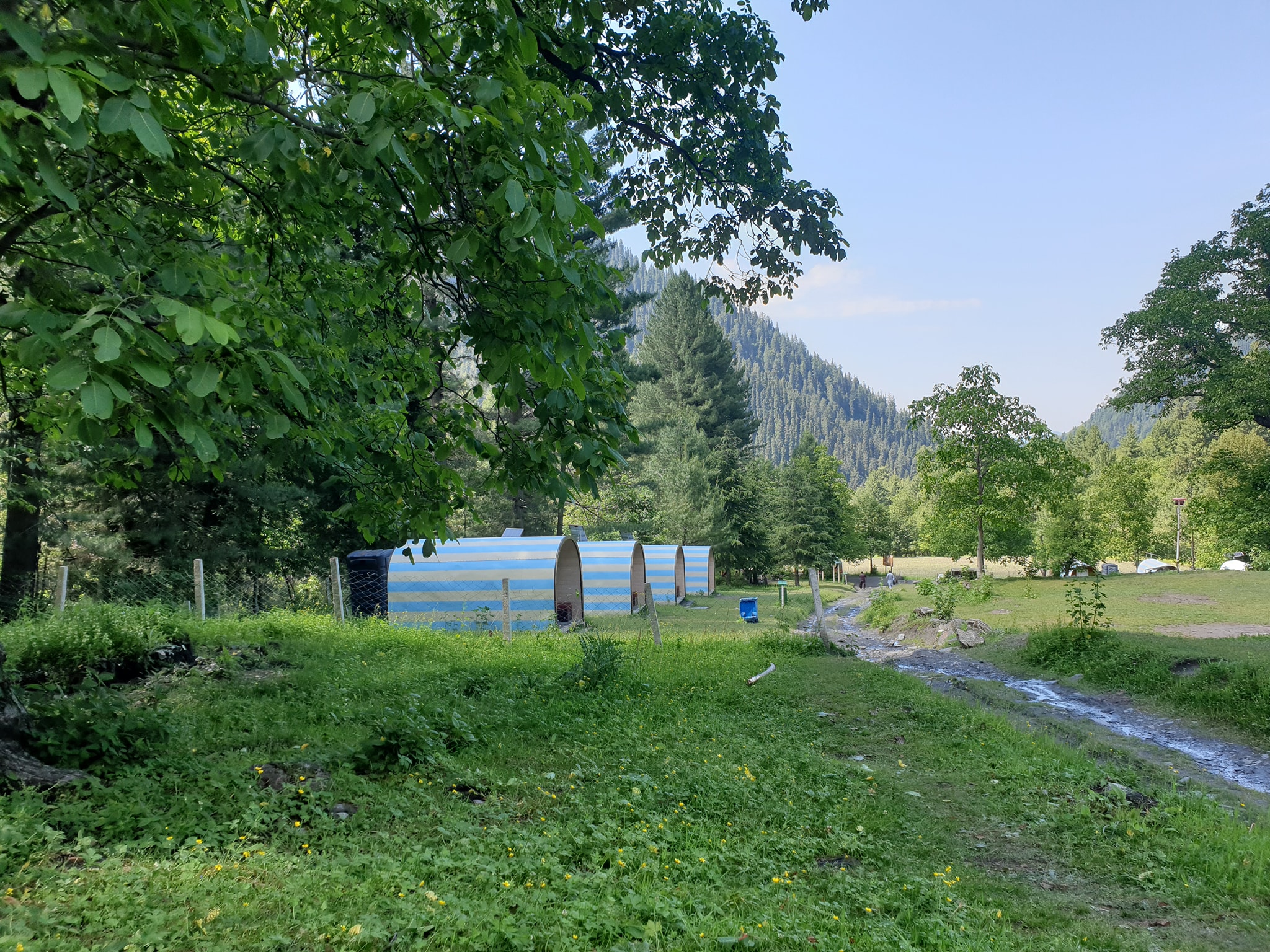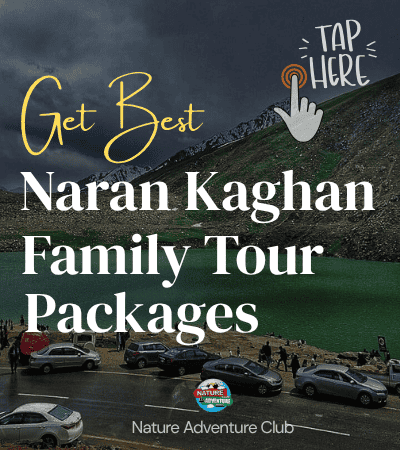Sharan Forest Beauty:
My journey to Sharan Forest was nostalgic, as it reminded me of past travel adventures. From the dusty trails of Taobat to the perilous jeep ride to Fairy Meadows, and the ride through the massive pine trees of Ushu Forest to Saiful Malook, I recalled it all.
The deadly expedition in Gol National Park and the rocky journey to Siri Paye also came flooding back. This 16 km trek to Sharan brought back memories of vibrant colors—gold, red, yellow, orange, and green. I felt both happy and sad; I was smiling yet teary, but one thing was clear—I cherish these experiences.
Trekking Experience:
With limited time, we set off for Manshi Peak after a quick 45-minute preparation with our water bottles and a bag of snacks. The hike is easy and suitable for beginners. The path is magnificent, with chinar trees adorned with golden-yellow leaves. Walking and chatting while breathing in the fresh, dust-free air, we enjoyed a pleasant trek free of trash and unpleasant odors. I assure you, you will not forget to smile during this journey.
After resting at a few stops, we finally reached Manshi Peak after a comfortable two-hour hike. This spot was truly a treasure. It boasted lush green grass, surrounded by towering snow-capped mountains and clouds overhead. Although goat droppings filled most of the green area—something I had not encountered in my 26 years—I was able to overlook that and appreciate the beauty around me.

